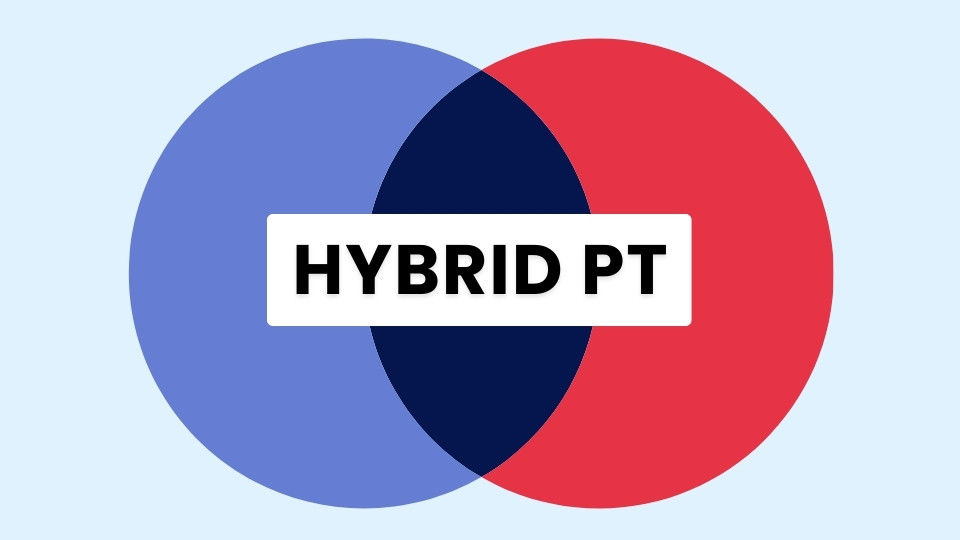Understanding the Nuances: Habilitative Care vs. Rehabilitative Care in Physical Therapy
- Andrea Ryan
- Nov 21, 2023
- 4 min read
In the dynamic and evolving field of physical therapy, professionals often encounter diverse cases that require tailored approaches to address patients' unique needs. Two key concepts that play a crucial role in shaping these approaches are habilitative care and rehabilitative care. While they may sound similar, these terms represent distinct branches of therapeutic intervention, each with its own set of principles and goals. In this blog post, we'll delve into the nuances of habilitative care and rehabilitative care, shedding light on the differences that every physical therapist should be aware of to provide optimal care for their patients.
Defining Habilitative Care
Habilitative care focuses on developing and enhancing skills and functions that individuals may not have acquired due to congenital conditions, developmental delays, or other factors. The primary goal is to help patients attain a level of functional ability that enables them to participate fully in daily life activities. Habilitative care is often associated with pediatric physical therapy, where therapists work with children who are still acquiring fundamental motor skills and cognitive abilities.
In habilitative care, the emphasis is on building a foundation for future growth and development. Therapists employ a variety of interventions, including exercises, activities, and adaptive equipment, to foster the acquisition of age-appropriate skills. This could involve working on gross and fine motor skills, coordination, balance, and cognitive functions, depending on the individual needs of the patient.

Understanding Rehabilitative Care
On the other hand, rehabilitative care comes into play when an individual has experienced a loss or decline in functional abilities due to injury, illness, or surgery. The primary objective of rehabilitative care is to restore the patient to their optimal level of functioning and independence. This form of care is more commonly associated with adults, as it often involves the recovery process following accidents, surgeries, or debilitating health conditions.
Rehabilitative care addresses the specific impairments and limitations that result from a particular injury or illness. Physical therapists develop targeted treatment plans that aim to improve strength, flexibility, endurance, and overall functionality. Unlike habilitative care, rehabilitative interventions focus on regaining skills and abilities that were once present but have been compromised.
Key Differences Between Habilitative and Rehabilitative Care
1. Timing and Developmental Stage:
- Habilitative Care: Typically initiated during childhood or early stages of development to facilitate the acquisition of essential skills.
- Rehabilitative Care: Usually implemented after an injury, illness, or surgery to restore lost or compromised functions.
2. Goal Orientation:
- Habilitative Care: Aims to establish a foundation for future growth and development, focusing on acquiring age-appropriate skills.
- Rehabilitative Care: Aims to restore a patient to their prior level of functioning, addressing specific impairments resulting from injury or illness.
3. Nature of Interventions:
- Habilitative Care: Involves a variety of activities and exercises geared towards skill development and enhancement.
- Rehabilitative Care: Focuses on targeted interventions to address the impairments and limitations resulting from a specific injury or condition.
4. Patient Population:
- Habilitative Care: Primarily associated with pediatric patients or individuals with developmental delays.
- Rehabilitative Care: Commonly applied to adults recovering from injuries, surgeries, or health conditions.
5. Long-Term vs. Short-Term Focus:
- Habilitative Care: Emphasizes long-term development and the acquisition of foundational skills.
- Rehabilitative Care: Often has a shorter-term focus on recovering specific functions within a defined timeframe.

Case Studies: Putting Theory into Practice
To better illustrate these concepts, let's consider two hypothetical case studies:
Case Study 1: Habilitative Care in Pediatric Physical Therapy
Emily, a 4-year-old child, has been diagnosed with cerebral palsy, a condition that has affected her gross motor skills and overall coordination. A physical therapist implementing habilitative care would focus on activities that promote the development of fundamental motor skills, balance, and coordination. Adaptive play equipment, exercises, and games would be employed to create an engaging and therapeutic environment. The goal is to enable Emily to acquire age-appropriate skills, laying the groundwork for her ongoing development.
Case Study 2: Rehabilitative Care Post-Surgery
John, a 45-year-old construction worker, recently underwent knee surgery following a workplace injury. In this scenario, a physical therapist would engage in rehabilitative care. The treatment plan would involve targeted exercises to regain strength in the affected knee, improve range of motion, and enhance overall functionality. The therapist may use a combination of therapeutic exercises, manual therapy, and modalities to address the specific challenges posed by John's injury. The goal is not to develop new skills, as in habilitative care, but rather to restore the skills and functions John had before the injury.
In the diverse landscape of physical therapy, understanding the distinctions between habilitative care and rehabilitative care is essential for delivering effective and patient-centered interventions. By recognizing the unique goals, populations, and approaches associated with each type of care, physical therapists can tailor their strategies to meet the specific needs of their patients.
Whether working with children on the path to acquiring essential skills or aiding adults in recovering lost functions, physical therapists play a vital role in promoting health and well-being across the lifespan. By embracing the nuances of habilitative and rehabilitative care, these professionals can continue to provide comprehensive and impactful interventions that empower individuals to lead fulfilling and functional lives.
Coding and reimbursement for the differing types of physical therapy can be confusing and challenging. Luckily, PatientStudio offers physical therapists and their staff a completely managed billing system that allows them to get back in the treatment room and guarantees great reimbursement rates. Book a demo today to see how your business can run more smoothly with the help of PatientStudio.



Comments